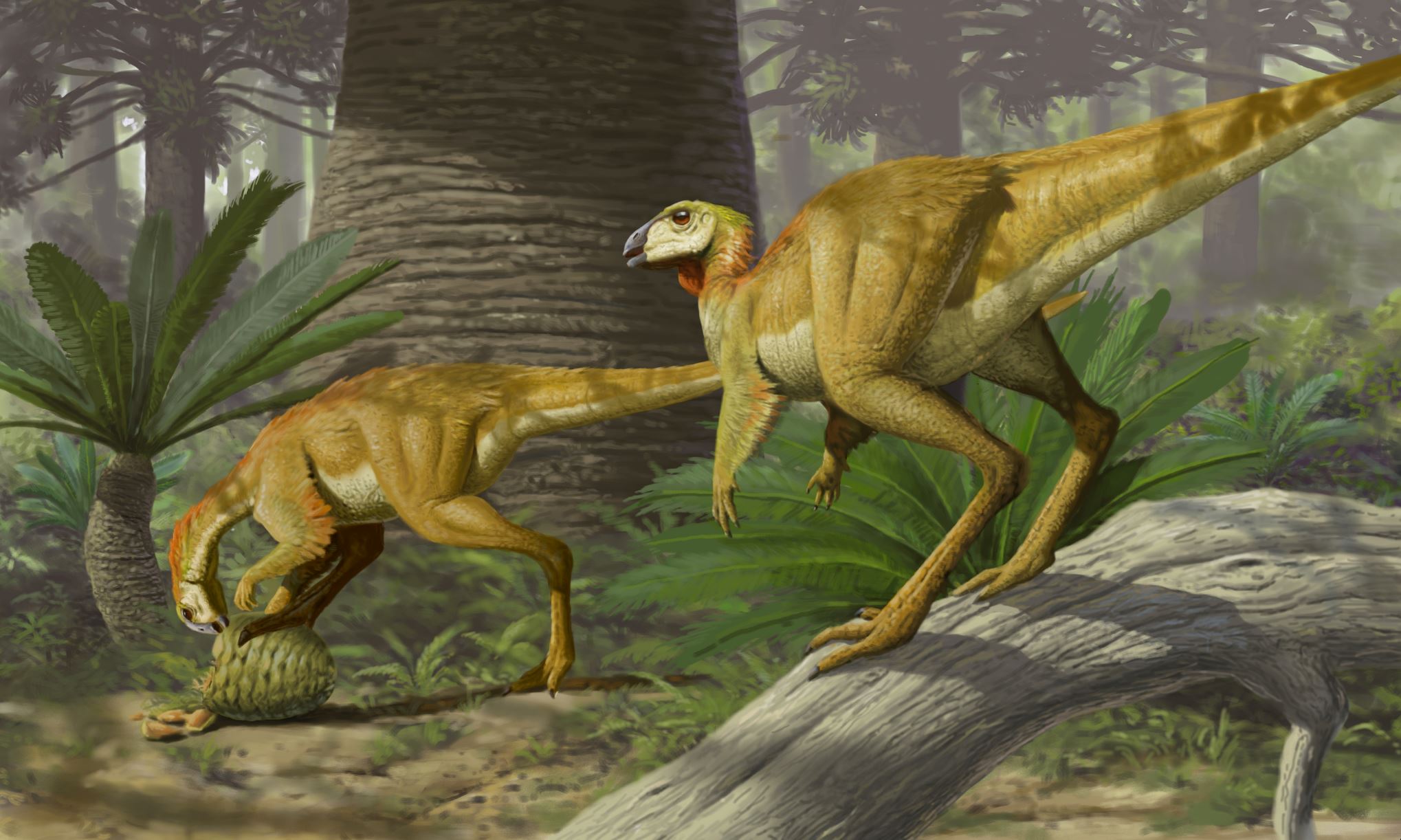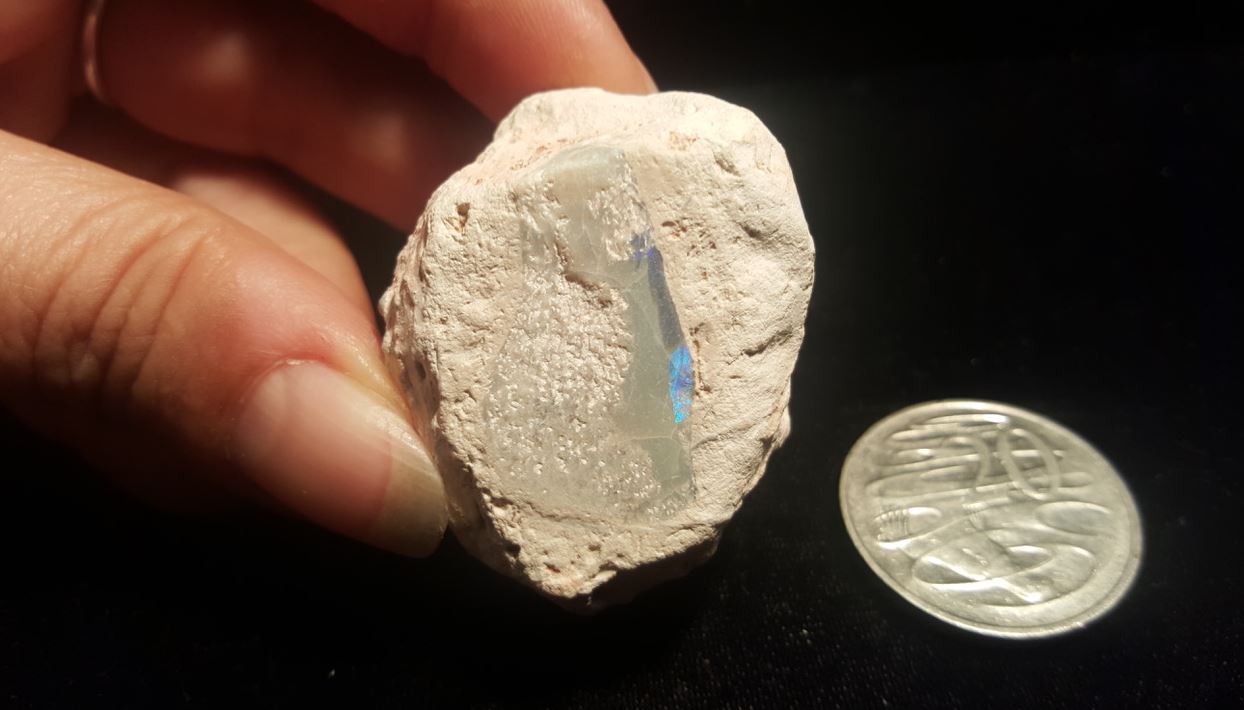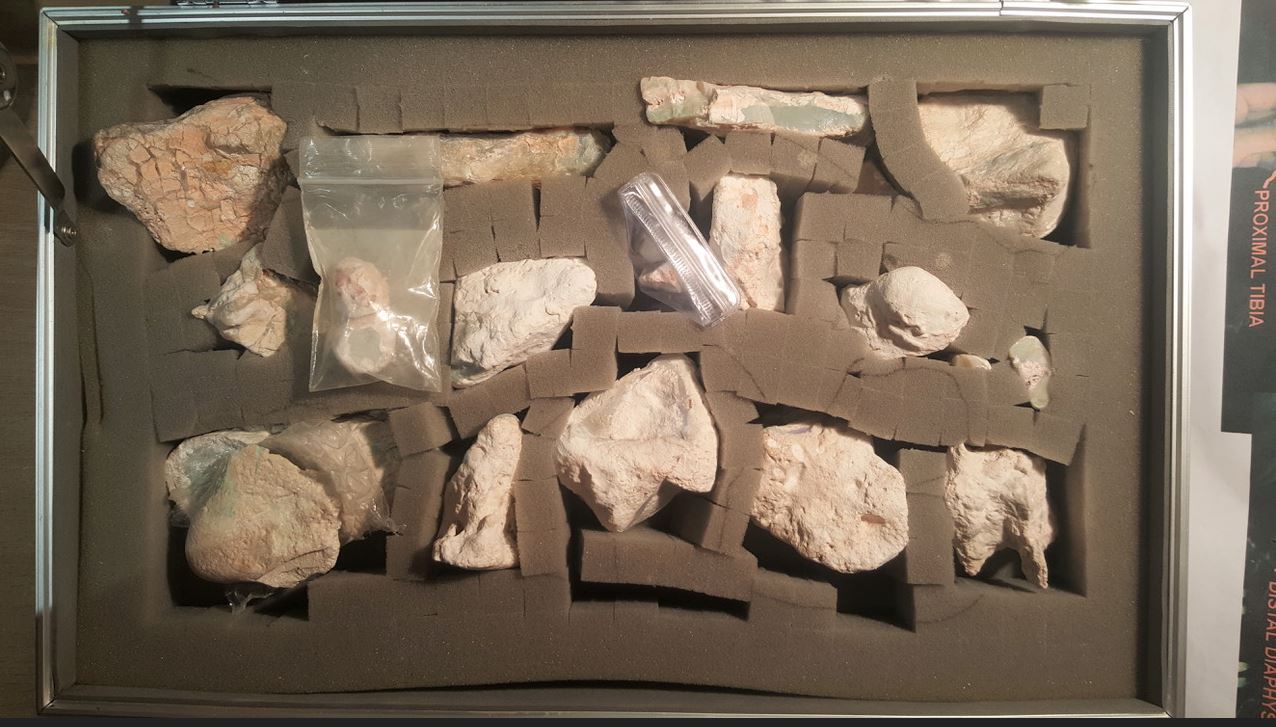
A collection of ancient rocks with opalised bones from Lightning Ridge in NSW is about to ‘come to life’ in a novel project involving scientists from Flinders and interstate.
More than 100 million years ago when Australia was part of the supercontinent Gondwana, a vast array of dinosaurs lived, died and left a remarkable fossil record – some of it beneath our remote outback opal fields.
Now palaeontologist and video documentary-maker, Flinders University Associate Professor Paul Willis, has unveiled plans to ‘rescue’ one such rare fossil, thought to be a substantial part of the skeleton of a small plant-eating dinosaur.
The dinosaur would have lived on a forested floodplain 100 million years ago, along with other dinosaurs including the recently discovered Weewarrasaurus and Fostoria, says Associate Professor Willis, whose video production company Palaeo Pictures will record the recovery and analysis of the fossil found by opal miners and stored in boxes and an old suitcase.
The documentary will continue with the study and reconstruction of the animal at the Flinders University Palaeontology Lab in South Australia before the stunning discovery is returned to its ‘burial ground’ in NSW, in the new $20 million-plus Australian Opal Centre at Lightning Ridge.
A team of leading Australian palaeontologists, from Flinders University, the University of New England in Armidale and the Australian Opal Centre, will conduct the preparation and study of this specimen.
The research will use CT scans for an initial examination of the sandstone-encased bones to see what is there, before the rock is removed. Then the bones will be put back together and studied.
While still encased in sandstone, the fossilised remains are most likely to be from a small ornithopod dinosaur, a plant-eater that often walked on its hind legs.
“Only in Australia can you get dinosaur fossils that are also solid opals,” Associate Professor Willis says. “We can’t tell yet how much of the skeleton we have or what species of dinosaur it belongs to. It could well be new to science and it’s certainly a beautiful specimen.
“These are rare pieces of Australia’s natural heritage and it is our honour to play a part in helping to protect this opalised dinosaur for the benefit of future generations of Australians.”
Jenni Brammall, the Special Projects Officer at the Australian Opal Centre, a public museum at Lightning Ridge, says it’s an exciting collaboration to save this exciting new group of opalised dinosaur fossils.
“Opal miners in Australia unearth incredible plant and animal fossils, and the vast majority of the world’s opalised dinosaur fossils are discovered in the mines around Lightning Ridge,” she says.

“The opalised fossils belong to the opal miners who find them but, because they are recognised as a valuable part of Australia’s natural and cultural heritage, the fossils are protected by law against being exported without a permit.
“Opal miners need to recover the costs of finding and excavating these fossils; few can afford to simply give them away. So it’s thanks to Palaeo Pictures and the Australian Opal Centre this project is getting under way.”
Members of the public are invited to support the study and the documentary by visiting the Palaeo Pictures website and logging on to a GoFundMe campaign. Every dollar counts and supporters will be acknowledged in the documentary credits.
“Palaeo Pictures will be making a video documentary about the whole process so that everyone can see what’s involved in bringing a dinosaur back to life and the wonders of Australia’s unique opalised fossils,” Associate Professor Willis says.
At the conclusion of the study, Palaeo Pictures will donate the dinosaur fossils to the world-leading collection of opalised fossils at the Australian Opal Centre where they will be displayed in a new building due to open in late 2021.


